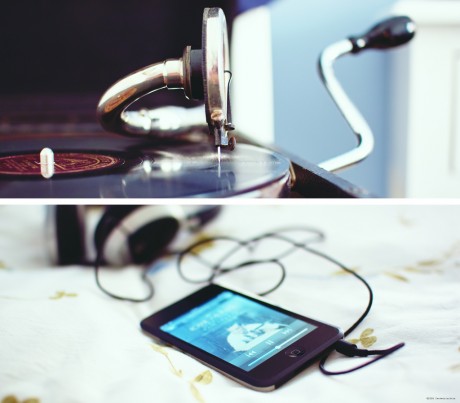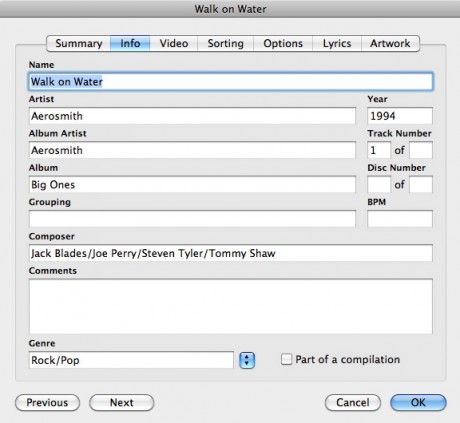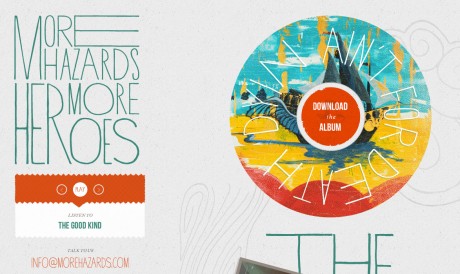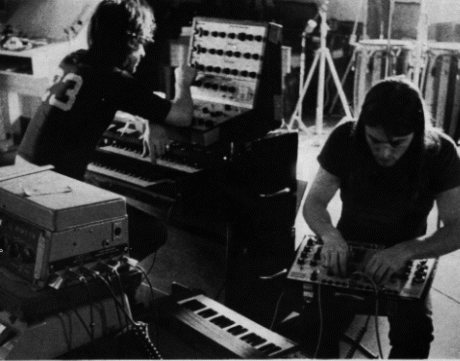
I’ve been meaning to write this article for a looonnggg time, and I am finally finding the time to get around to it. It really irks me whenever I hear somebody say they are dissatisfied with digital music. It doesn’t have to be some boring, robotic thing, people! Despite what some industry folks may tell you, there are still tons of music fans out there that prefer the experience that a physical music item can provide. I am one of them. Believe it or not, there are ways that artists can bring some of the physical album experience to digital music. Some of it is common sense, and some of it takes a little “out of the box” thinking, but it is indeed possible.
1. Re-thinking album artwork
Nothing beats gazing at a nice vinyl gatefold…right? Actually, you can do some pretty creative visual things with digital music. For example, you can attach a different image to each song on your album. If you have a ten song album, you can provide fans with ten different pieces of artwork! When the song changes, so does the artwork that appears in the listener’s player. For the mathematically inept…that’s ten times more things for fans to look at while listening to your album.
There is also the idea of “synchronized artwork,” something that Arcade Fire used with their latest album, “The Suburbs.” Instead of including a static .jpg image with your album, you can use the .m4a format instead, which allows you to tag different images to particular moments during an audio file. This basically turns your static album cover into a dynamic slideshow, where you can display things like live photos, song lyrics, and even hyperlinks. Although not tangible, introducing these ideas to a typical digital download can make for a visual experience that rivals its physical predecessors.
2. Detailed meta data (aka liner notes)

Don’t you just love seeing “Track 01, Unknown Artist” after adding a new song your iTunes collection? Yeah, me neither. So many bands still forget to do this, and in 2011 there is no excuse for it. FILL IN YOUR META DATA! We are living in the Information Age, aren’t we? Meta data makes life easier for your fans, and gives the artist an opportunity to describe the digital music file accurately. You can even add the song lyrics to your audio files before sending them off to iTunes, so when a listener plays the song on their iPod or computer the lyrics will display so they can follow along as they listen.
3. Keep the costs low
It’s important to make some money if you want to have a sustainable career as a musician, but also understand that the perceived value of music has dropped considerably over the last decade. In the 90’s, nobody enjoyed paying the bloated price of $16 for a new CD that usually contained one or two decent tracks. Music was more affordable for fans back when vinyl records were the mainstream listening format. The same goes for digital music today. Although it means less revenue from music sales, it also means happier fans. Happier fans stick around for the long haul. Happier fans attend concerts. Concerts will make you money. Also, the cost of producing and distributing music today is a fraction of what it was ten years ago. Since costs are smaller (virtually zero in some cases), most independent artists keep a larger percentage of each music sale they make. Keep your fans in mind when coming up with a pricing model for your music products.
4. Make your music shareable

Whether online or offline, word-of-mouth recommendations are still the most powerful way for people to discover new music. In real life, it starts with a tap on the shoulder, and online, it starts with a status update or a tweet. Either way, there needs to be something interesting tied to your music in order for people to want to share it with their peers. There also needs to be tools (e.g. share buttons) in place to make it easier for your fans to share your music.
5. Build an experience around one album/song
Another way to bring the physical experience to digital music is to create an interactive web page based upon one album or song. A band that does an incredible job of this is More Hazards More Heroes. The web design team that they hired really nailed this one.

Currently, their entire website revolves around their latest record, and provides an experience that is very similar to looking at a CD booklet or vinyl gatefold. The website is one page, a hub where fans can stream the songs, read the lyrics, look at photos, download the entire album, and contact the band directly. You can also provide the same sort of experience around one song. The incredible team over at Viinyl makes this ridiculously easy, and the end result is an immersive fan experience that blends visual elements, information, music, sharing, and downloading.
6. Include bonus material
Whenever I purchase a new vinyl record, I get really happy when I open it up and find things like posters, download cards, and other bonus material inside. While not tangible, you can provide this same experience with digital downloads too. Include stuff like bonus tracks or b-sides, .pdf booklets with extra artwork, imagery, biographical information, and maybe even a few high resolution images so fans can print their own posters and memorabilia if they are into that sort of thing.
7. Write music with the intent of creating an album

Rather than stringing together a bunch of random songs that you have lying around in notebooks, you can try to write something that is cohesive and follows a theme. Many of the greatest albums ever written were done so with the format of an album implanted in the back of the musicians’ minds. It’s no easy task, but if you are used to writing and releasing singles, taking on an entire album can be a fun and challenging project that you can release as a full body of work and create an experience around for your fans.
Chris Bracco is currently the digital marketing manager and web designer for Intrigue Music, LLC, a boutique music management company in NYC. This post was originally published on Chris’ music blog, Tight Mix.
Image credits —
#1: Click here
#2: Screenshot I took
#3: Click here
#4: Screenshot I took
#5: Click here